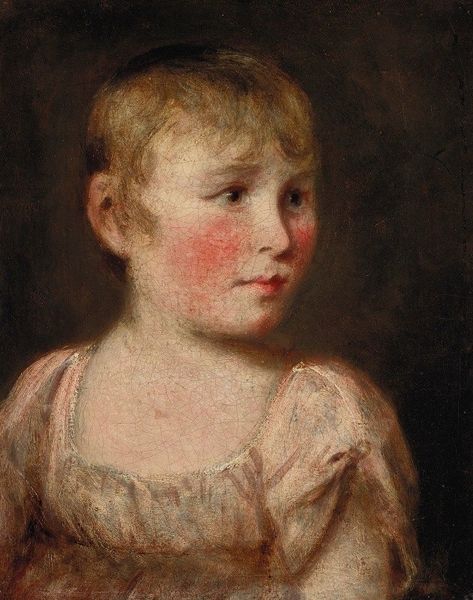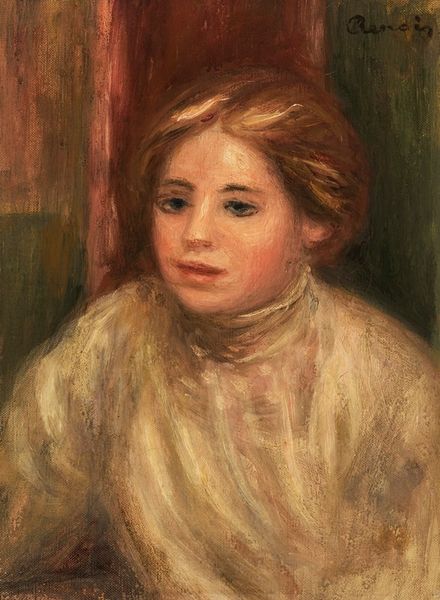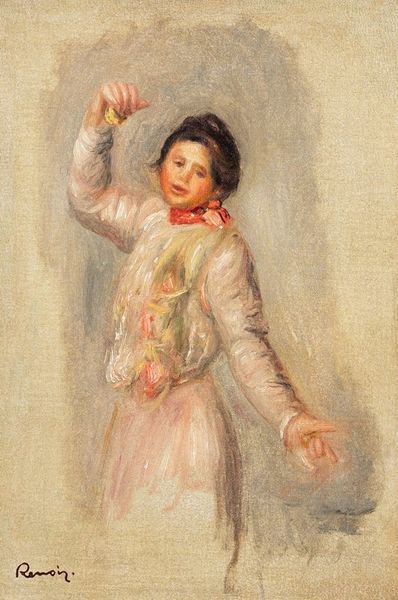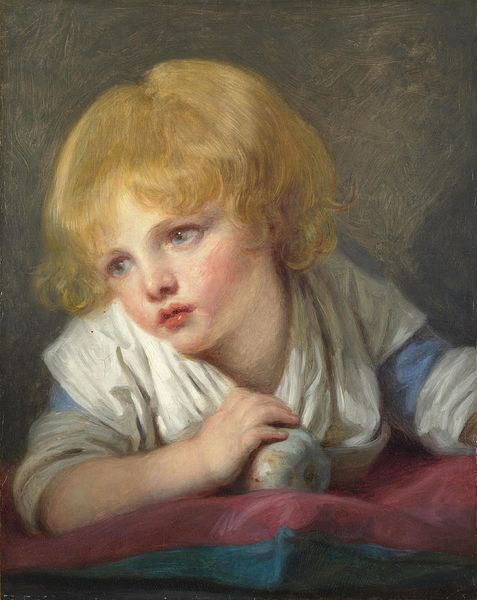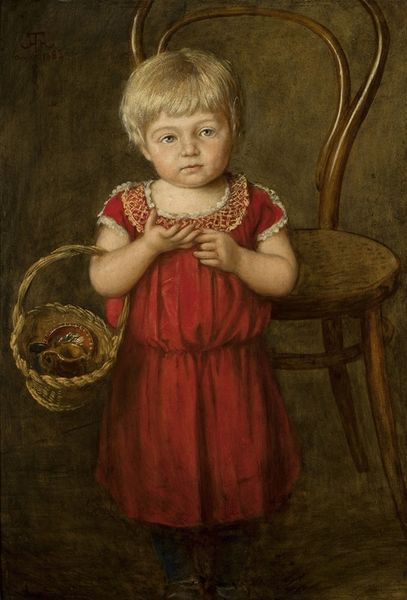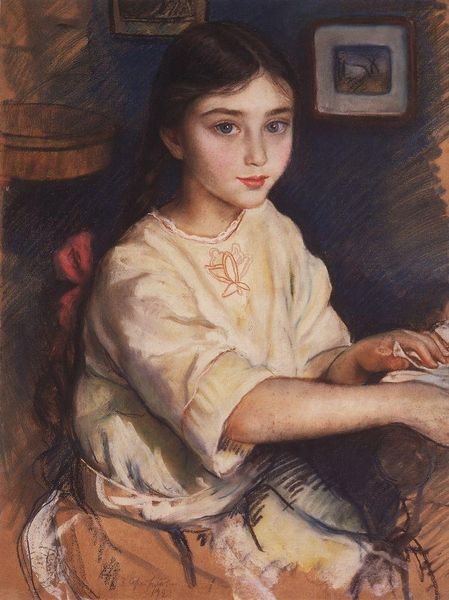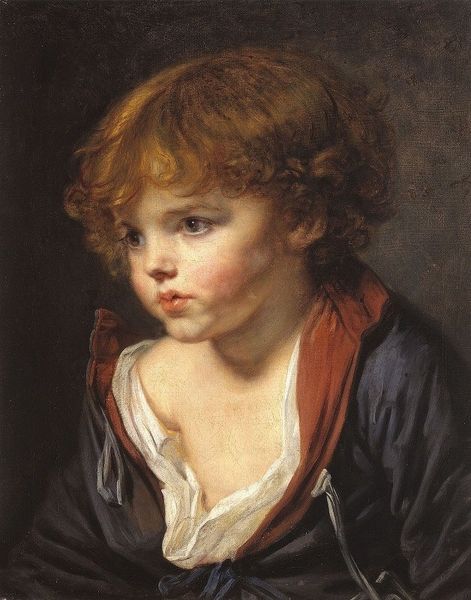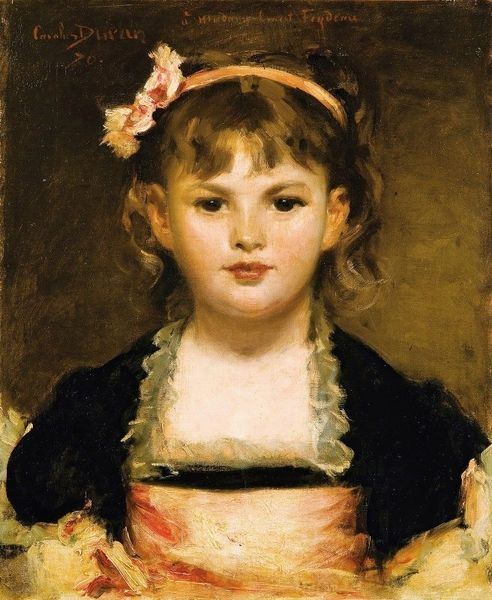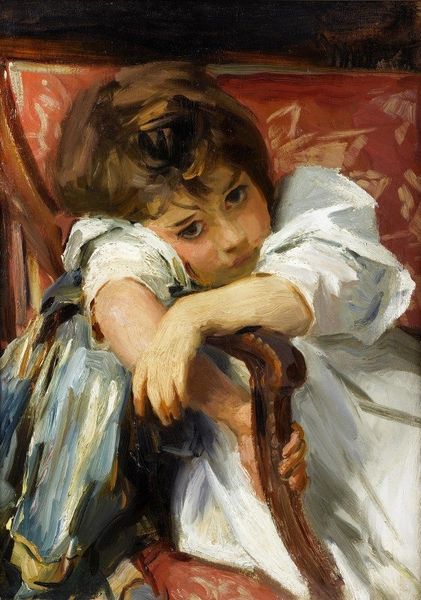
Dimensions: 33 x 27 cm
Copyright: Public domain
Curator: Welcome. We are looking at Carl Bloch's "Adéle, a Roman Girl," completed in 1864. It's an oil painting showcasing his genre and portrait work. Editor: The girl's gaze is incredibly magnetic. I am struck by her direct, but not confrontational, look and how softly the light catches the fabric draped around her arm. It's intimate and inviting. Curator: Indeed. Bloch was a master of capturing a certain kind of light. Remember, Bloch’s paintings found great success, and his art was collected by people across various social classes in the 19th century. Editor: Bloch's popularity prompts an examination of the audience he was seeking and what appealed to them. In depicting Adéle, what story was he hoping to tell or sell, considering his socio-economic background and the power structures of the time? Curator: The art market played a big role here, of course. Scenes like these offered glimpses into a romanticized, innocent view of childhood. These were marketable narratives for middle-class and aristocratic families seeking reassuring visions of innocence in the family. Editor: Which complicates matters. It brings forward questions about power dynamics. Here we have an artist with, presumably, access and privilege capturing an image of a "Roman girl," presumably a young subject with limited agency. Is there an underlying commentary? Curator: The Academic style itself imposed restrictions. Bloch’s art training influenced a controlled narrative. Consider how those restraints impacted his vision and the girl's representation. It certainly speaks to the power structures inherent in art creation and how they mirror societal biases. Editor: Thank you for that added dimension. I leave here with a better appreciation of the artwork, and I recognize the lens through which Bloch has provided it. The narrative offers opportunities for critical examination regarding socio-economic themes. Curator: Likewise, this visit reminds us that appreciating the craftsmanship does not have to come at the expense of acknowledging the structures in place. Both converge to provide art history context.
Comments
No comments
Be the first to comment and join the conversation on the ultimate creative platform.



